Discover 11 hidden attractions, cool sights, and unusual things to do in Kilmarnock (United Kingdom). Don't miss out on these must-see attractions: Dean Castle, Dick Institute, and Palace Theatre. Also, be sure to include Burns Monument Centre in your itinerary.
Below, you can find the list of the most amazing places you should visit in Kilmarnock (Scotland).
Table of Contents
Dean Castle

Wooded park around 14th century castle. Dean Castle is situated in the Dean Castle Country Park in Kilmarnock, East Ayrshire, Scotland. It was the stronghold for the Boyd Family, who were lords of Kilmarnock for over 400 years.
The Castle takes its name from ‘The Dean’ or wooded valley, a common place name in Scotland. However, until about 1700 it was called Kilmarnock Castle. Owned originally by the Boyd family, it has strong historical connections with many people and events famous in Scottish history. Robert the Bruce who gave the Boyds these lands; James III of Scotland whose sister married a Boyd; the Covenanters, some of whom were imprisoned here; Bonnie Prince Charlie, whose rebellion was joined by the 4th Earl of Kilmarnock and Robert Burns who was encouraged to publish his poetry by the Earl of Glencairn who owned the Castle at that time.[1]
Address: Dean Rd, KA3 1XB Kilmarnock
Dick Institute
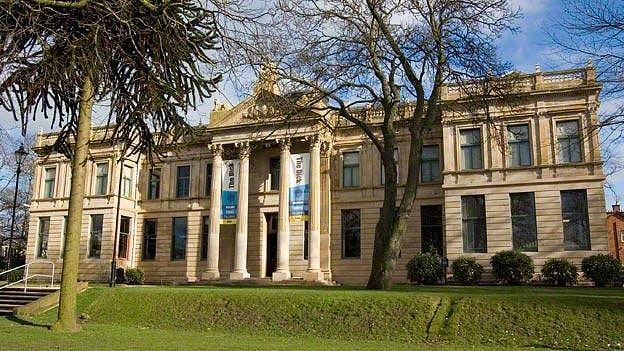
Museum in Kilmarnock, Scotland. The Dick Institute is a museum and library in Kilmarnock, Scotland. It is an important cultural venue in the south-west of Scotland, featuring the largest museum and art gallery space in Ayrshire as well as the central library for East Ayrshire.[2]
Address: Elmbank Ave, KA1 3BT Kilmarnock
Palace Theatre
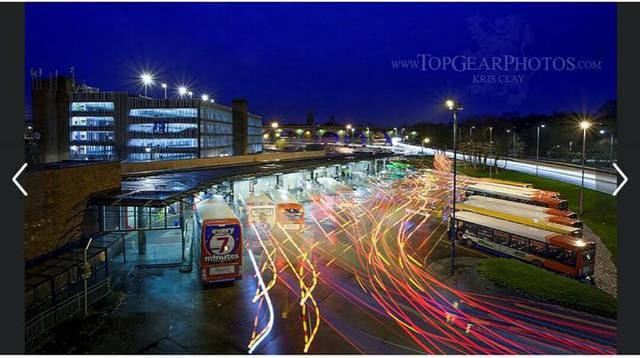
Performing arts theater in Kilmarnock, Scotland. The Palace Theatre in Kilmarnock was originally opened as a corn exchange in 1863 and converted to a theatre in 1903. The red-sandstone Italianate tower, by James Ingram, dominates the cross at London Road and Green Street.
The building is A-Listed and was one of James Ingram's finest designs in Kilmarnock[3]
Address: 9 Green Street, Kilmarnock
Burns Monument Centre
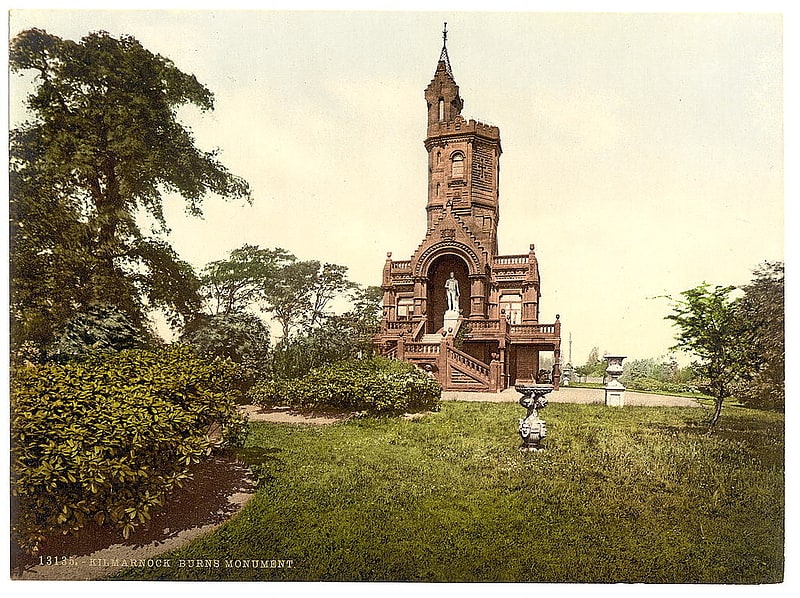
Library in Kilmarnock, Scotland. The Burns Monument in Kay Park, Kilmarnock, Scotland, commemorates the poet Robert Burns. It is located at an elevated position within Kay Park, to the east of Kilmarnock Town Centre. The monument was opened in 1879, and is a category B listed building. In 2004 a fire destroyed part of the monument. The building was restored and extended as a genealogy centre, reopening as the Burns Monument Centre in 2009.[4]
Address: Burns Monument Centre Kay Park, KA3 7RU Kilmarnock
Laigh Kirk
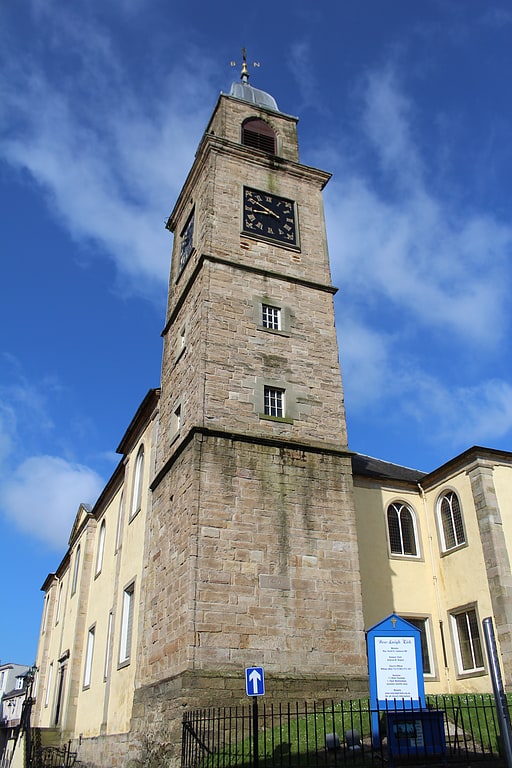
The Laigh Kirk is a church in Kilmarnock, East Ayrshire, Scotland.[5]
Address: John Dickie Street, Kilmarnock
Kay Park

Park in Kilmarnock, Scotland. Kay Park is a 30 acres park in Kilmarnock, East Ayrshire, Scotland. The money for its purchase was bequeathed to the town of Kilmarnock by former native insurance broker Alexander Kay who died in Glasgow in January 1866.[6]
Address: Stawberrybank Road, KA3 7RU Kilmarnock
Howard Park
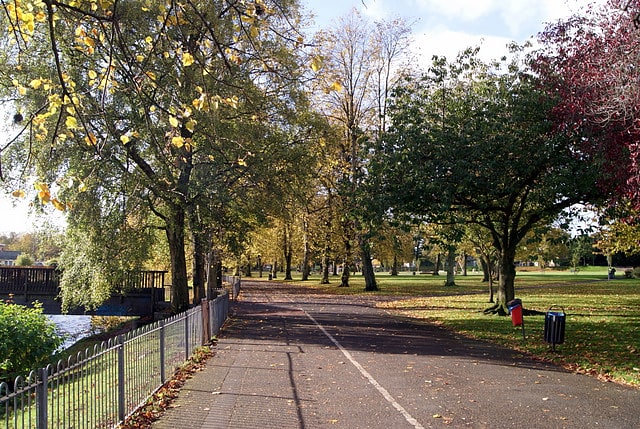
Park in Kilmarnock, Scotland. Howard Park is a public park in Kilmarnock, East Ayrshire, Scotland. It was previously known as Barbadoes Green. The roots of Kilmarnock Football Club may be traced back to the park.
Lady's Walk in the park commemorates the grief-stricken walks taken by the young widow of the Earl of Kilmarnock, who was sentenced to be hanged, drawn and quartered in London in 1746. His sentence was later commuted to beheading, and his widow died a year after his execution.
The land on which Howard Park is situated was given to Kilmarnock by the Howard De Walden family. It is a medium-sized park; other parks in the area, such as Kay Park, are much larger. Nearby is the site of the Saxone shoe factory, formerly on Titchfield Street; the factory was replaced by the Galleon Leisure Centre in 1986. The Centre, in turn, replaced the Corporation Baths (which had been open since 1940).
In October 2009, the play area in the park (which incorporated a variety of roundabouts, swings, climbing frames and sandboxes) was renovated. The old, fenced-off play park was removed and replaced with a modern, larger park extending into the old football field in the centre of the park
There is a bicycle path around the park, suitable for cyclists of all ages. Three parallel bridges connect the park to other areas of Kilmarnock, crossing the River Irvine. On one side of the park is a long hill, which slopes down to the central area of the park and the play area. The park is surrounded by a residential area, it has a variety of playground equipment and a new sport/exercise area.[7]
Kilmarnock War Memorial
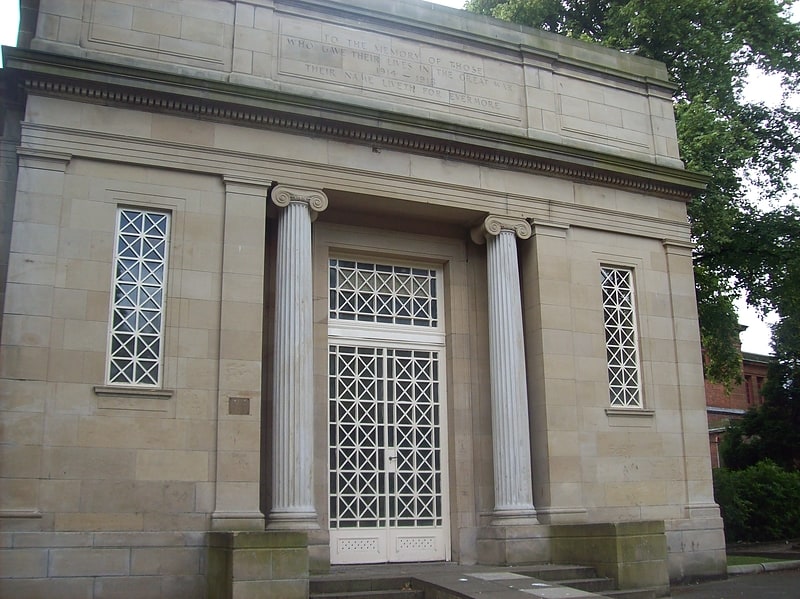
Memorial park in Kilmarnock, Scotland. The Kilmarnock War Memorial is a war memorial located in Kilmarnock Scotland. Built in 1927, it pays tribute to all those who fought in the First World War, Second World War, Korean War & the Northern Ireland Conflict. The building is accessible to the public, although access is restricted to a degree. The key is available from the Dick Institute, Elmbank Avenue, Kilmarnock KA1 3BU. Located across the road directly opposite the War Memorial.
Wall mounted inside are commemorative plaques to the following: First World War (1914-1918), Second World War (1939-1945), Second World War - civilians, Korean War (1950-1953), Northern Ireland Conflict; The Troubles (1969-1998) Source;
Inside there is a figure cast in bronze, ‘The Victor’, whose head is bowed in silent contemplation of the cost of war.
Interior Description: Hall of Remembrance with ionic pillars at the entrance. Inside there is a marble floor, There are 6 Bronze Plaques for WW1 and 2 for WW2 with names, also Brass Plaques for Korean war and Northern Ireland Casualties, and a Bronze Figure of Victory. The 850 WW1 names originally have subsequently been added to. Source:
Exterior Plaque: Exterior: TO THE MEMORY OF THOSE/ WHO GAVE THEIR LIVES IN THE GREAT WAR/ 1914 - 1918/ THEIR NAME LIVETH FOR EVERMORE Plaque: IN EVERLASTING MEMORY OF THE MEN & WOMEN/ OF KILMARNOCK WHO GAVE THEIR LIVES/ IN THE SERVICE OF THEIR COUNTRY/ IN THE TWO WORLD WARS Plaques, two to seven: (WW1 Names) Plaques, eight & nine: 1939 - 1945/ (Names) Plaque 10- IN MEMORY OF THOSE WHO GAVE THEIR LIVES/IN THE KOREAN WAR/ Plaque 11- IN MEMORY OF THOSE WHO GAVE THEIR LIVES/IN NORTHERN IRELAND/ Source@;[8]
Address: Elmbank Avenue, KA3 7BJ Kilmarnock
Kilmarnock railway viaduct
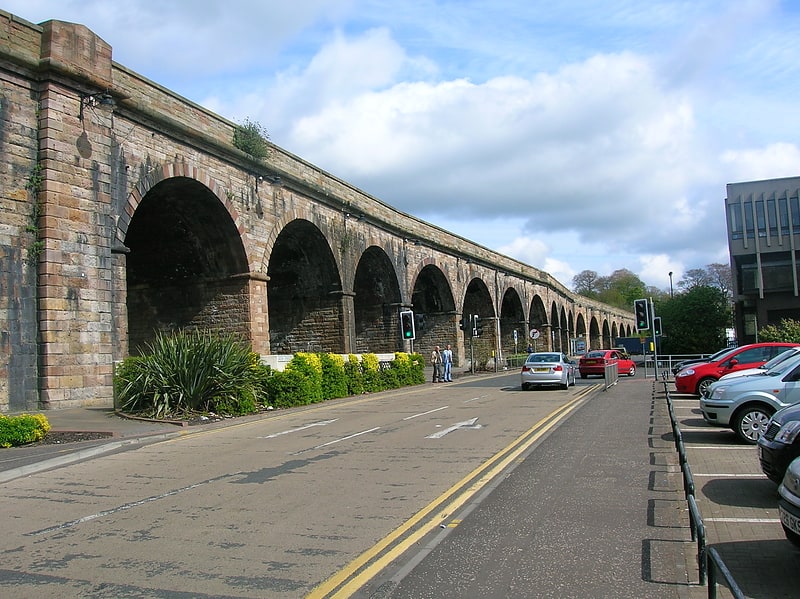
Viaduct in the United Kingdom. Kilmarnock railway viaduct, known locally as The Viaduct, is a railway viaduct crossing the town centre of Kilmarnock, and was constructed between 1843–1850. The bridge begins at Kilmarnock railway station and leads to destinations in England. It is a most distinctive feature of the town centre with 23 masonry arches and defines the northern boundary of the town centre. It was built in the 1840s to enable the Glasgow – Kilmarnock line to continue to Carlisle.[9]
Soulis Cross
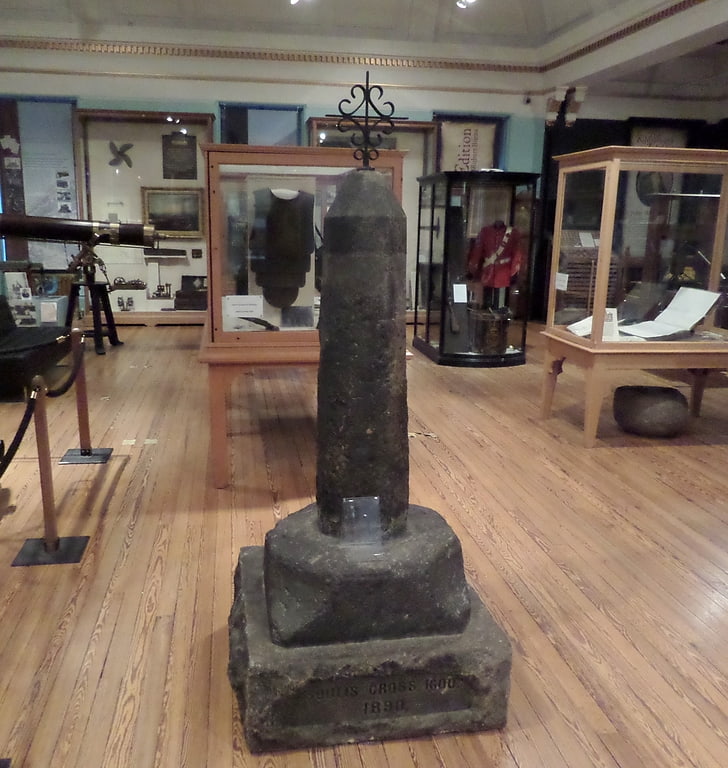
The ancient Soulis Cross was originally located in the centre of Soulis Street near the Kilmarnock Water in Kilmarnock, East Ayrshire, Scotland. In 1825 a replacement cross in the form of a fluted pillar topped with an urn was erected using funds raised by public inscription and this was placed near the original site but located in an alcove situated within the high boundary wall of the High Kirk. A brass diamond mark was placed in the road to indicate the original site where Lord Soulis is said to have died, but this is no longer visible as it has become covered with tarmac.[10]
Galleon Leisure Centre
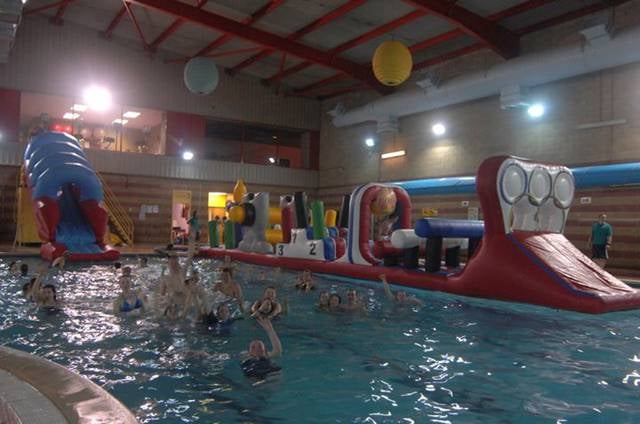
Outdoor activities
Address: 99 Titchfield Street, KA1 1QY Kilmarnock